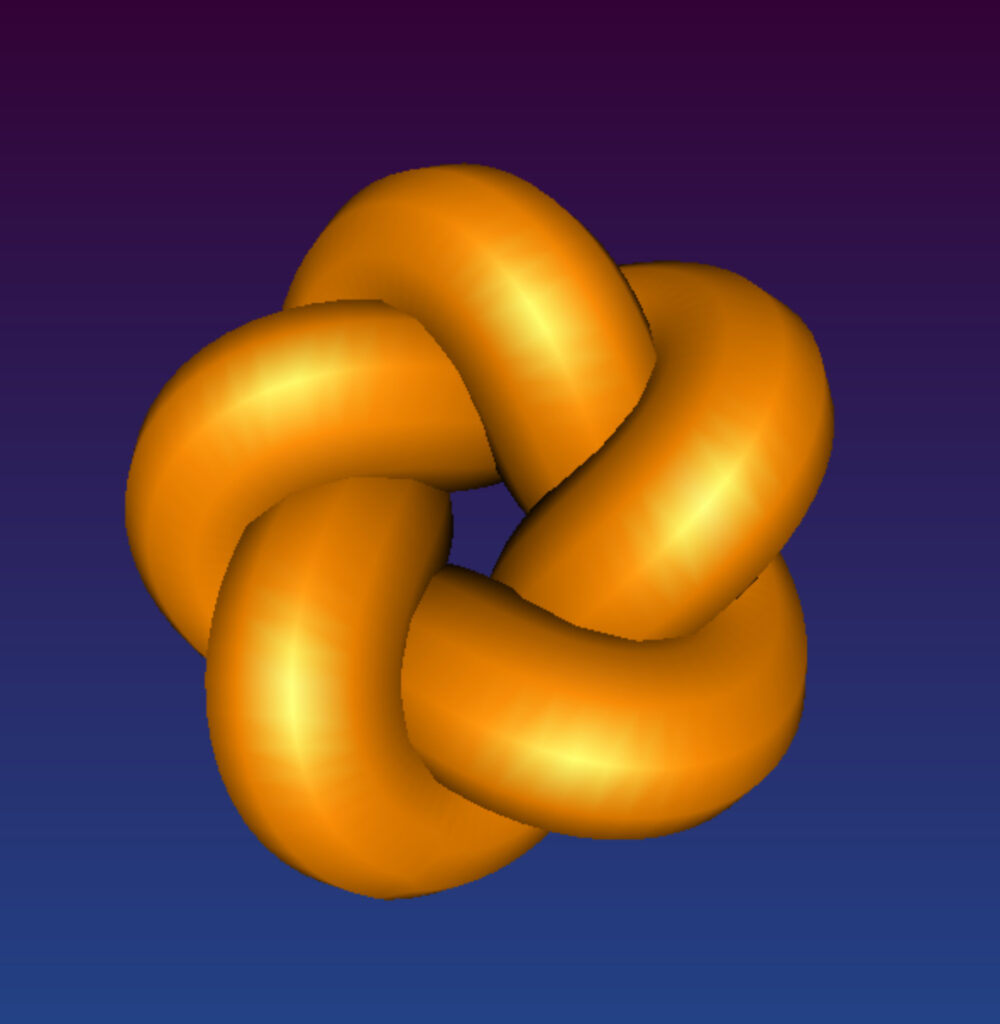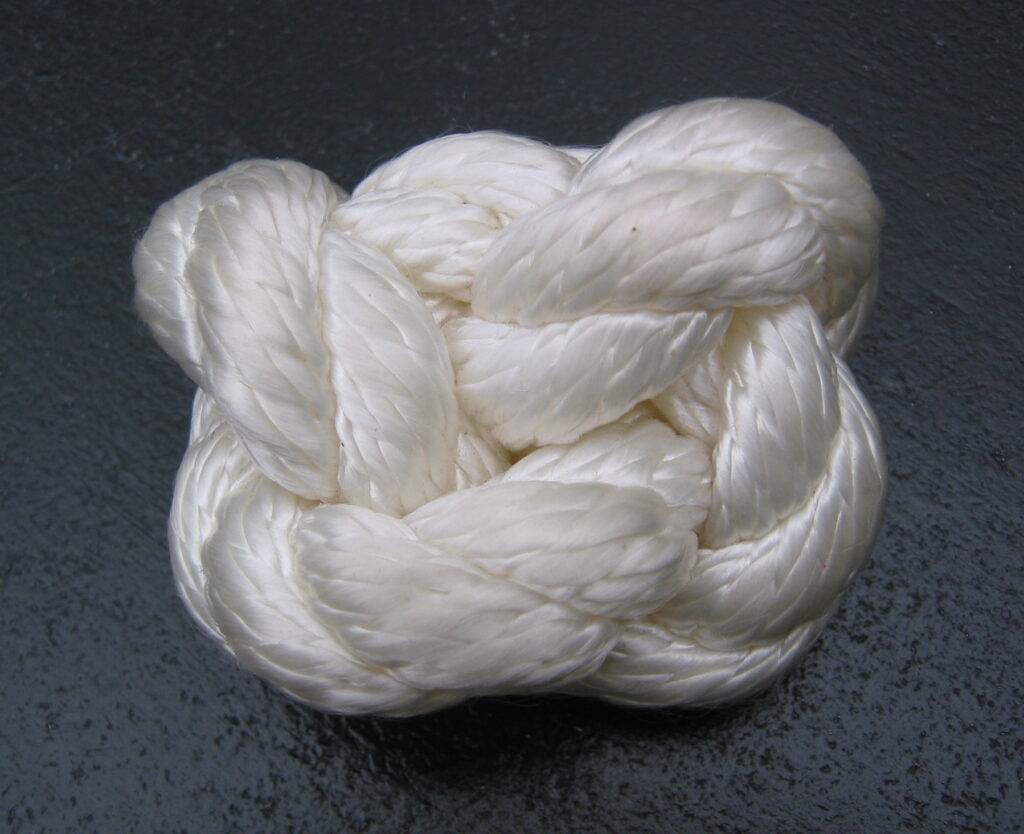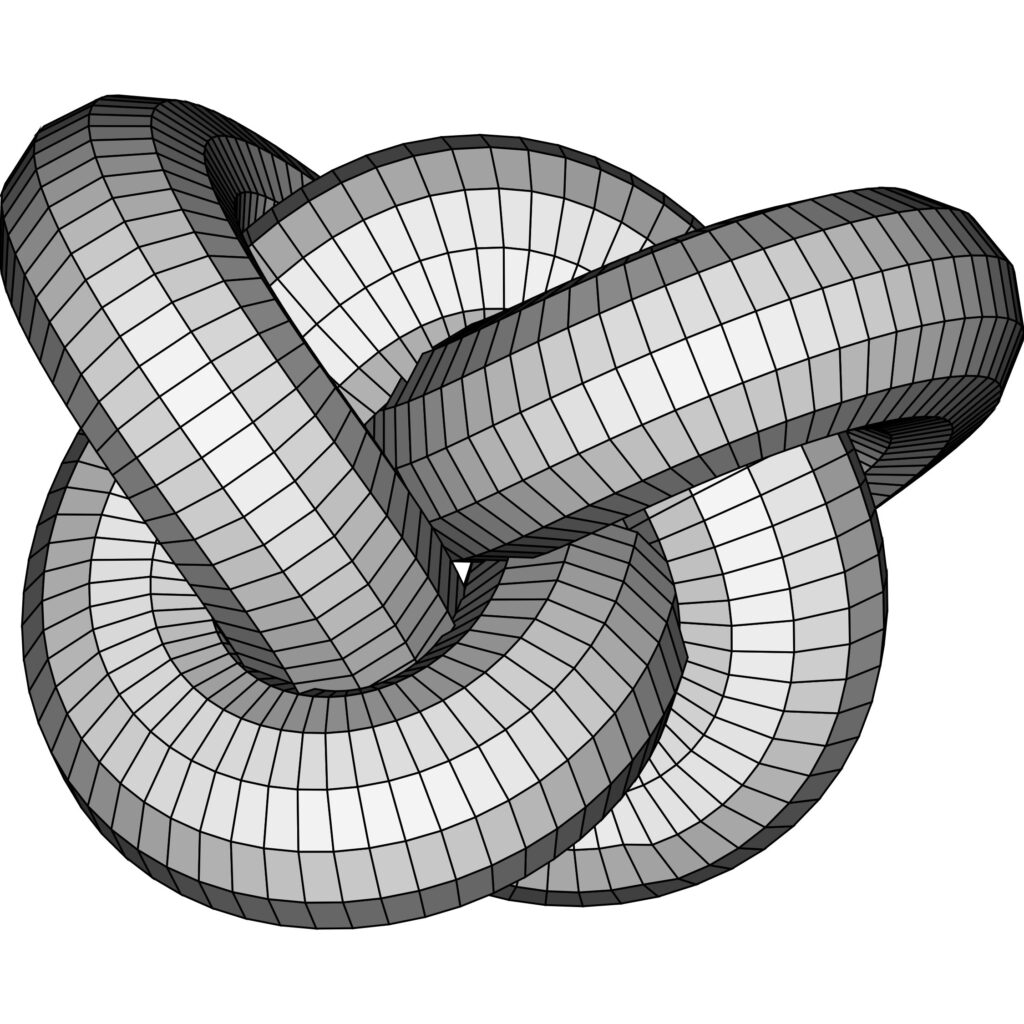Chapter 8: Ropelength
One of the most natural questions to ask when you are tying a knot or knitting a sweater is: how much rope or yarn do I need? Pick up a one foot length of rope. Which knots can you tie in it? Some knots you can, some you can’t — the rope isn’t long enough. How large a scarf can you knit with one ball of yarn? Perhaps any knot or tangling pattern has a sort of natural length associated with it — the least amount of rope or string it takes to tie it. Of course this is often a practical question — you need enough to tie what you want, but you often don’t want to be manipulating more filament than you need to.
Now of course this depends on the thickness of the rope or string. You can tie lots of knots in a one foot length of kite string, and none at all in a one foot length of ship’s hawser that has a diameter of six inches (a hawser is a huge rope used to tie a ship to a dock).
The nature of the cross-section of your string also matters — we might expect different results from a length of rawhide, which has a square crosssection, or a ribbon. Also, how tight do we pull it? (Maybe not so tight knitting a sweater, perhaps very tight lashing a mattress to the roof of a car). Can the rope stretch or compress?
But let’s assume the rope has a round crossection. Then we might expect a trefoil pulled tight to have the same shape whatever the diameter of the rope. We can see this in the collection to the right of ropes and strings of various diameters tied in trefoils.
So to compare the trefoil in the ship’s hawser to the trefoil in the kite string, we need to do what is sometimes called normalize — we look at the ratio of quantities we are measuring. Here we simply take the ratio of length of the rope to its diameter.

We can call this the tying length of a piece of rope — the tying length is just the number of diameters in the measured length. For example, say you had a piece of half inch diameter rope one foot long, then the tying length would be twenty four. A piece of eighth inch diameter twine would only be three inches long to have the same tying length.
In the picture to the right we have a rope that has blue threads which appear at the rate of seven diameters for every two spacings of the blue threads. So we could use the blue threads as markings on a rope ruler. In this figure eight, which is not pulled tight, nor tied in a closed loop, we can count nine spacings between blue threads. Since each two spacings is seven diameters, the tying length in the knot is approximately 31.5.
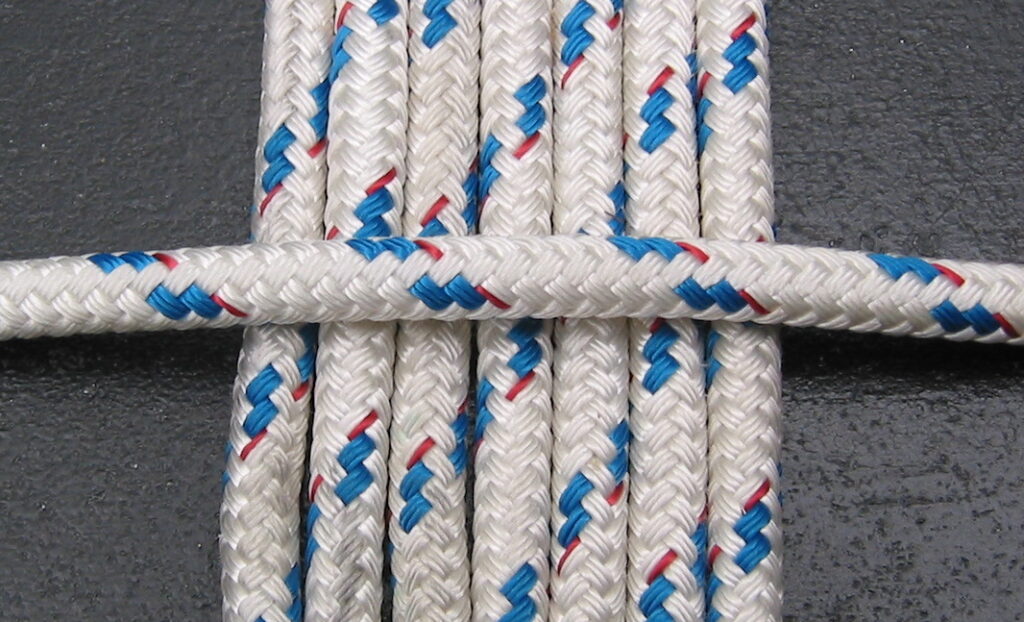
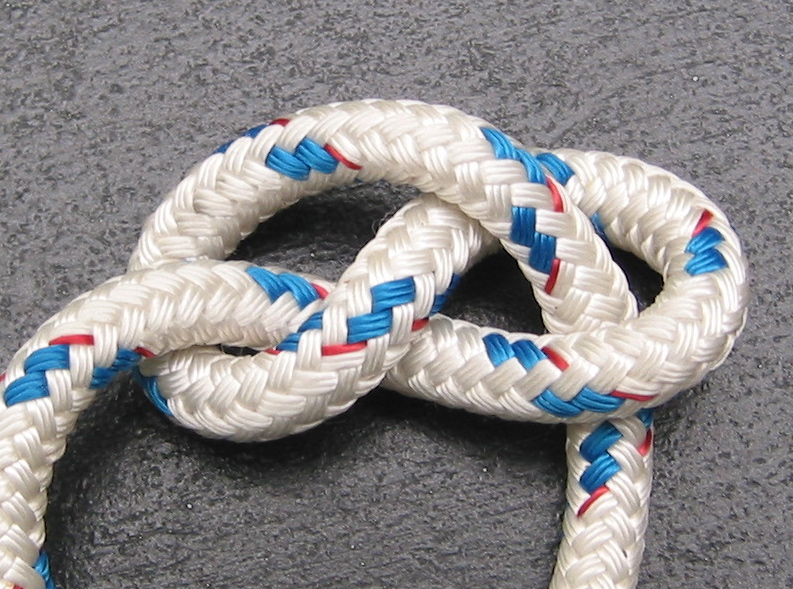
How do we determine where the knot begins and ends? There seems to be approximate places where the rope enters and exits the knot, but we would like a precise mathematical definition of the length required. We could require the knot to be tied in a closed loop. The downside of this approach is that this is not how we actually tie knots — to tie them in actual rope we need open ends. But we can approximate this quantity — tie the knot, mark on the rope the points where we would cut it to complete the loop, and measure the length between the markings. Or we could make a rope ruler with marks enumerated, and tie knots with it.
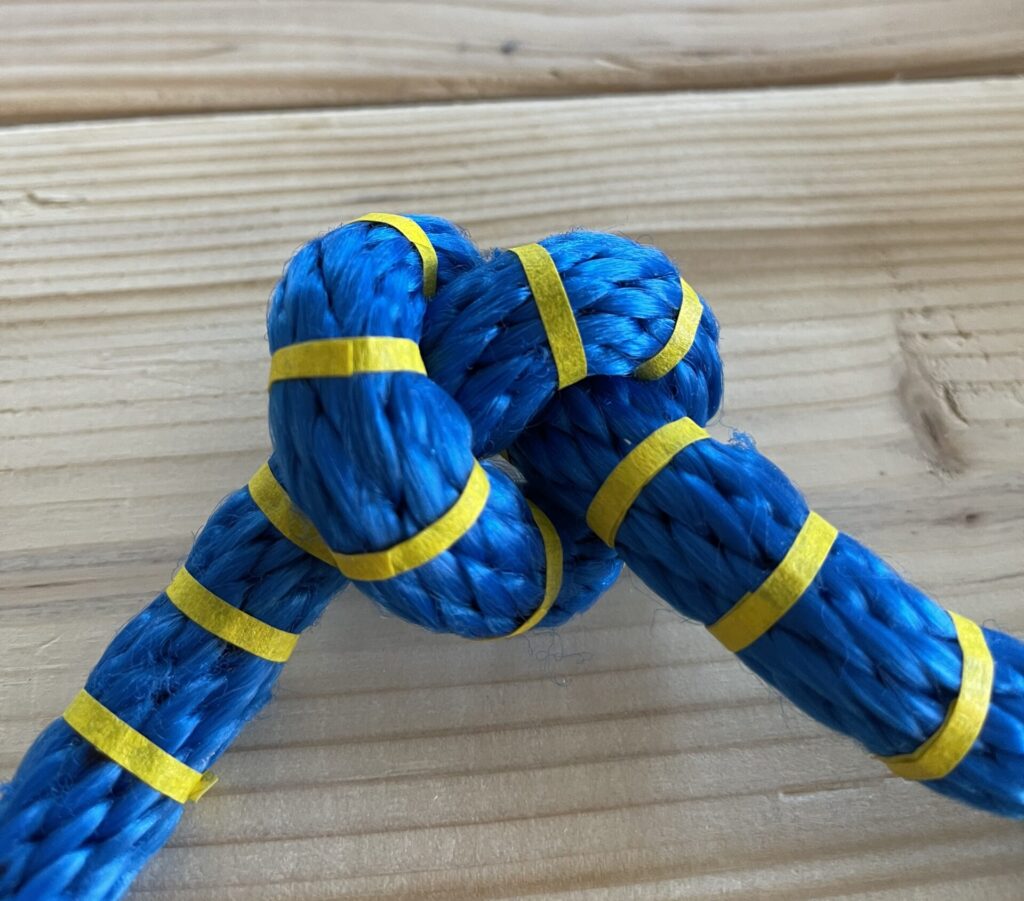
We then define the ropelength of a knot as the minimum tying length required to tie the knot in a closed loop. For a link the ropelength is the minimum tying length required for all the components to be closed.
To estimate the ropelength we tie the knot, pull it tight — we are looking for the minimum — measure the length and divide by the diameter of the rope. In the real world the rope might stretch, or fail to maintain a circular cross-section as we tighten. But in the mathematical world we can imagine we are tying the knot in a perfect rope: a perfectly bendable cylinder of constant circular cross-section.
Now such a cylinder does not actually exist, but this should not trouble us. After all, perfect spheres and perfect squares do not exist either — any actual sphere or square has some imperfection, though it may be minute, and we have no problem thinking about spheres and squares. Plato thought this was how truth worked — that in searching for truth we are seeking ever better approximations of an ideal form, such as a perfect sphere. One way of describing a sphere is as the shape with the least amount of surface area for a given amount of volume.
Similarly, we can imagine that there are ideal forms of knots — the shape they take when tied in a perfect closed cylindrical loop of minimal length. By pulling the rope tight, we can approximate the ideal form.
And since tying length is scale invariant –we divide by the diameter of the cylinder — we will get the same number for ropelength whether we use a perfect string or a perfect four foot diameter climbing tube.
There is also the interesting question: does the length required depend on how we tie the knot? Or as we tighten it, does it always go to the same position no matter what our initial position was?

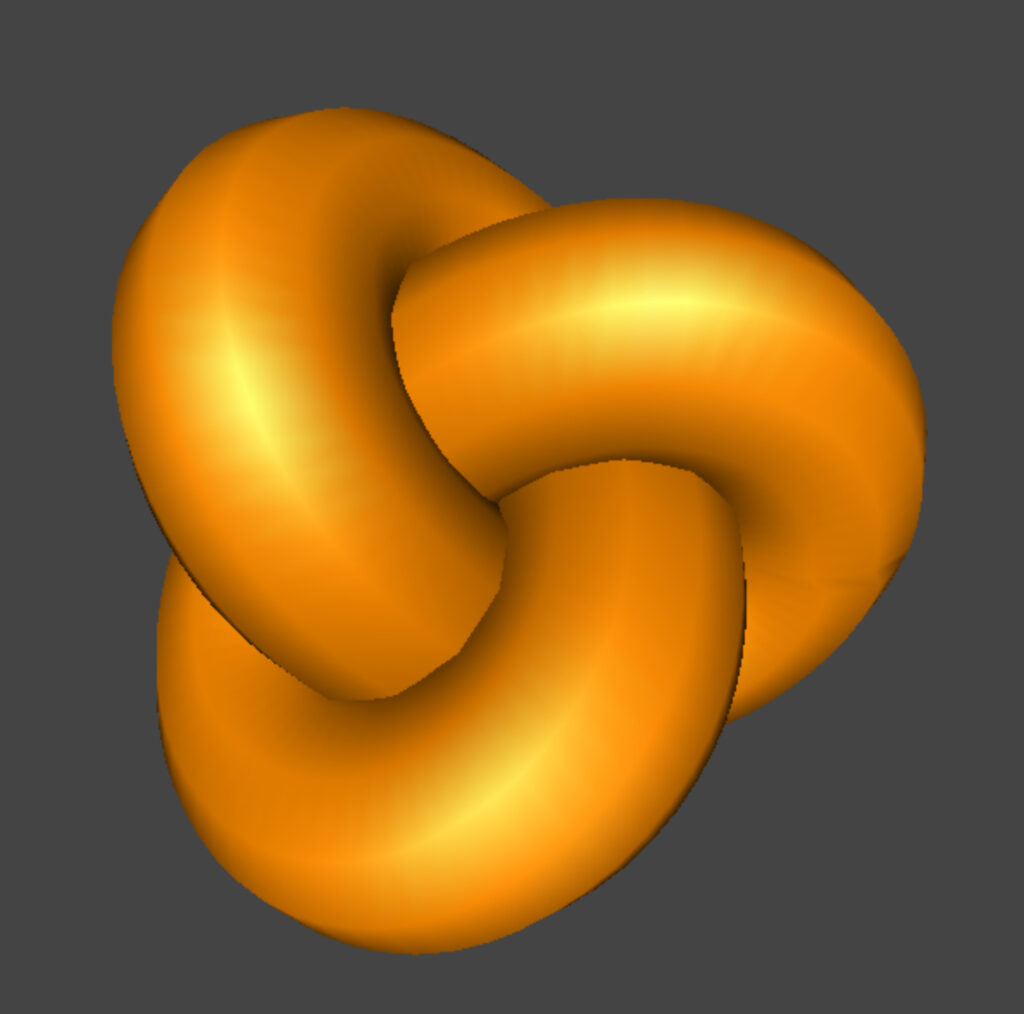

Here we have some quick estimates of ropelength for the trefoil knot, and for the figure eight knot, together with pictures of the minimum tying positions. These are estimates — we don’t have a way to directly calcutae the ropelength for these knots besides trying to tie them by hand or on the computer. There are, however, a couple situations where we can calculate the ropelength.
First, the unknot. Here we have depicted an unknot with minimal trying length. It looks like a bagel — we have cut away some of the outer surface of the cylinder so that the center curve of the perfect rope can be seen. The length of this center curve, divided by the diameter of the tube, is the ropelength we are after. The center curve is a circle of radius 1`, so it has length 2 Pi. The diameter of the cylinder is 2, so the ropelength is Pi.
The second ropelength we can calculate is for the simple link — two linked circles. Now each donut has an opening in the center for the other donut to pass through. So the radius of the center curve is 1. But we have drawn it so that the diameters of the cylinders are also 1. So each cylinder is of tying length 2Pi, so the total ropelength of the link is 4 Pi.
Next is a link of three components, as depicted here. There are two circular components, each of which links with a center component. The center component has what is sometimes called a stadium curve as its center curve. Each of the circular components has tying length 2 Pi. The stadium curve is built from two half circle end-caps, plus two straight line segments. The end-caps sum to a tying length of 2 Pi. In cross-section we can see that the straight segments are length 1. Therefore the tying length of the center component is 2 Pi + 2, and the ropelength of the whole link is 6 Pi + 2.
We could make a chain of these stadium curves, ending the chain with the circular components on each end, or we could make it entirely of stadium curves, linking the first loop to the last to make a closed chain — it seems clear by symmetry this can be done with an even number of components; not clear, to this author anyway, what is possible with an odd number of components.
One thing that is interesting about the three component link above, is that the minimum ropelength position does not appear to be unique. When we tighten knots, such as the trefoil and the figure eight, they seem to become immobile. At their tightest positions, the apparent ropelength minimizers, they become rigid, having no flexibility. But this link has a couple degrees of freedom — the circular components can be rotated to have different angles with respect to one another. No matter how much you tighten, you cannot stop this motion. So what we have is a family of ropelength minimizer positions, as opposed to a unique one. This is also the case of the chains we described.
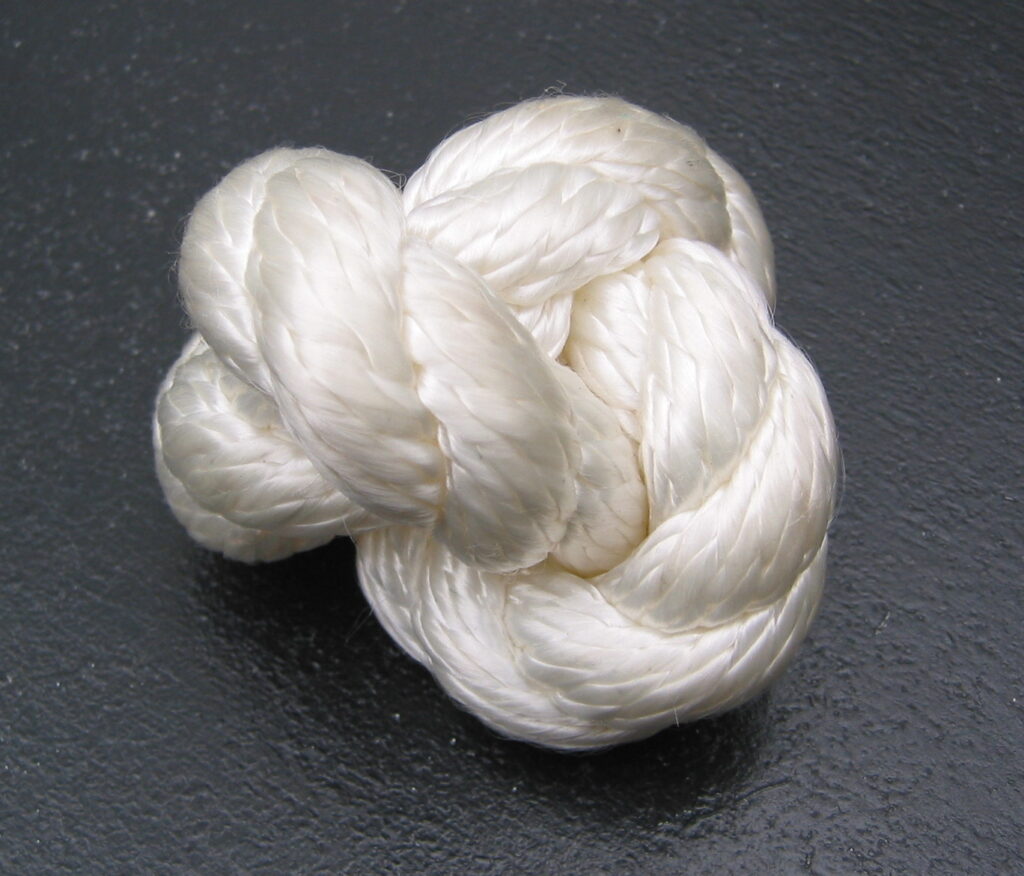
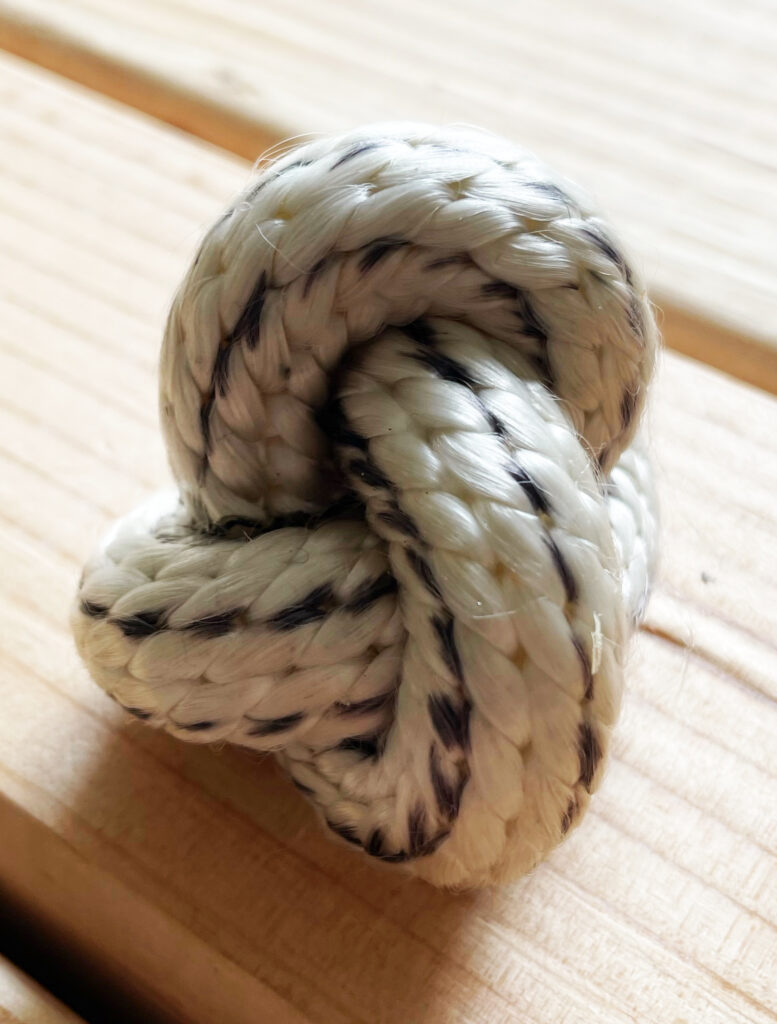

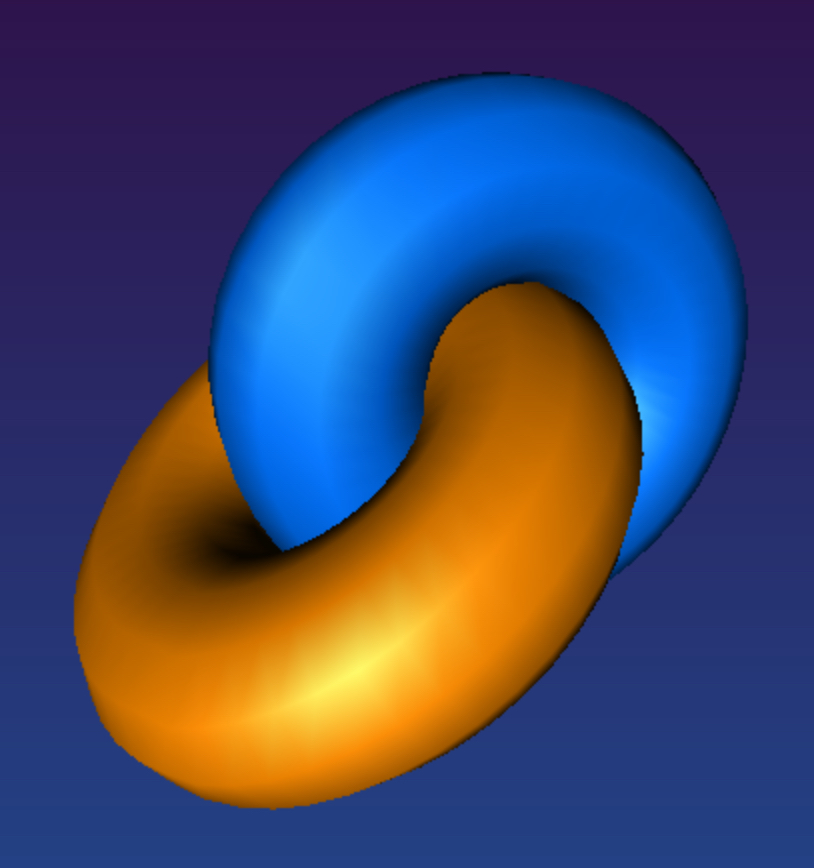


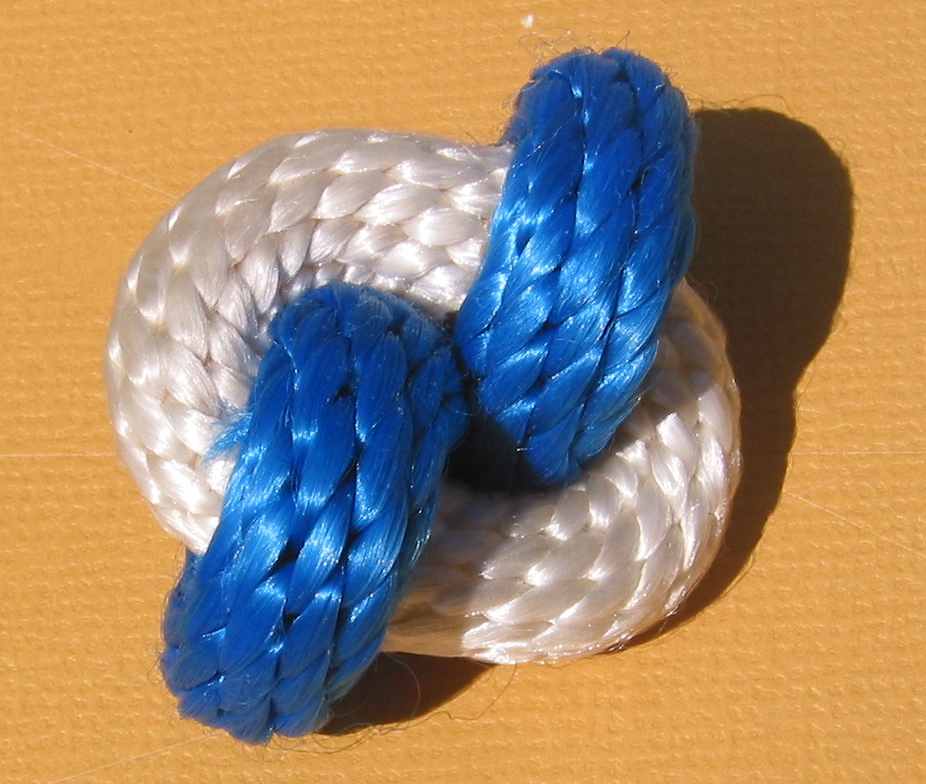
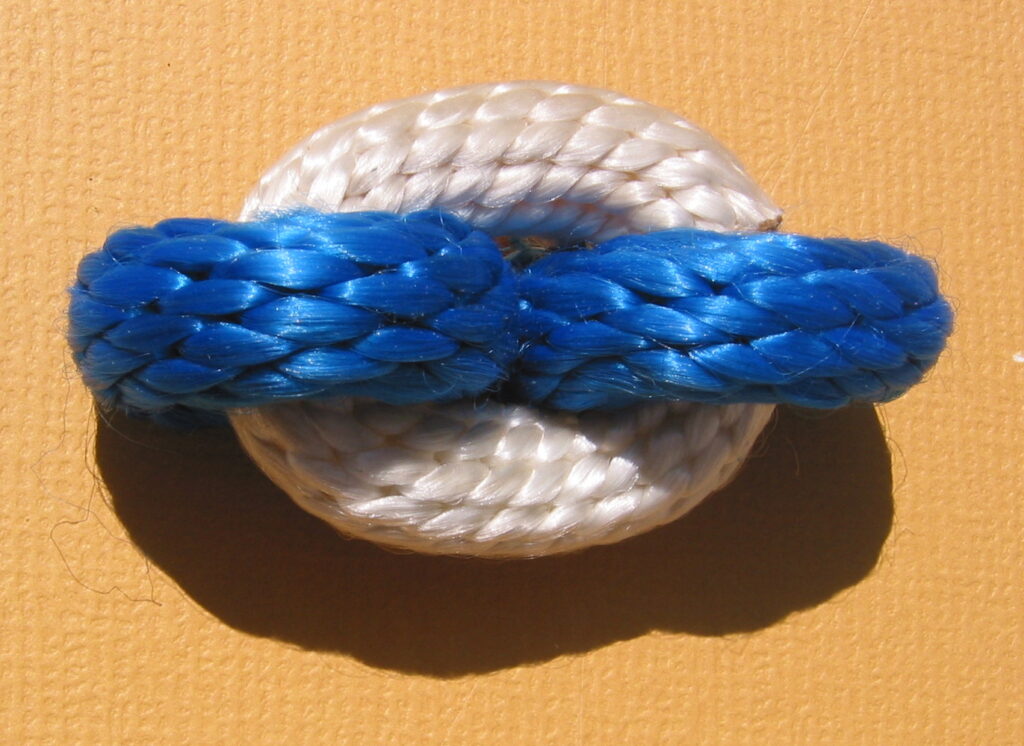

The apparent ropelength minimizer for the Borromean Rings (see Chapter 5) has an attractive geometric shape. The ropelength estimate, following the reasoning we used above on this picture, is that there are three elongated stadium loops. For each loop the end caps sum to 2 Pi in length, and the straight sides are each here 2 in length, so each loop is 2Pi +4 in length, so in all we have a ropelength estimate of 6Pi +12.
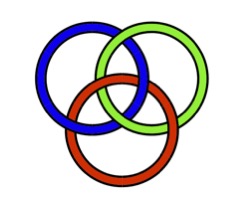
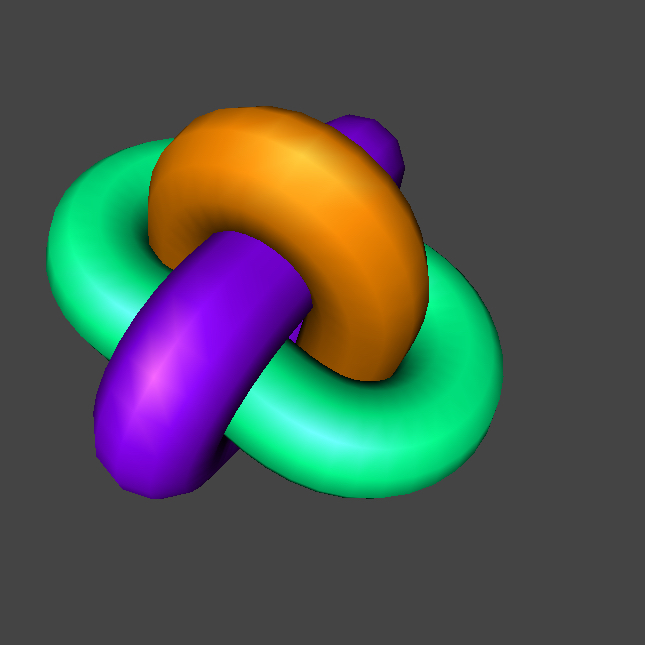
What is the story with ropelength and knot products? Well, it certainly seems that the ropelength should be bounded above by the sum of the ropelengths of the knots being combined, maybe plus a little bit to connect them. After all, we could tie one knot in a rope, then tie another right next to it in the rope, then close the loop. We can tie products with many component knots, and in a tightened form they take on interesting geometries. The fact that we can tie them with tying length that is linear in the number of factors means that the ropelength is at most linear in the number of factors, so a product of 20 trefoils might have a ropelength of approximately 280. We say at most because when we tie with a certain length we are showing it can be done with that length, but this does not preclude the possibility that there is another method of tying which uses less length. Ropelength is the minimum tying length over all possible configurations of the knot.
n-Twist knots and 2,n torus knots can similarly take on algorithmic patterns when tightened, so we can estimate that the ropelength for these knots will similarly grow linearly with n. We have tied constructions for both families to the right. As was the case with products, these algorithmic constructions show an upper bound for ropelength. That is, they display ways of tying that appear to be minimal or tight, but finding a particular way of tight tying does not preclude other possible ways that might use less rope.
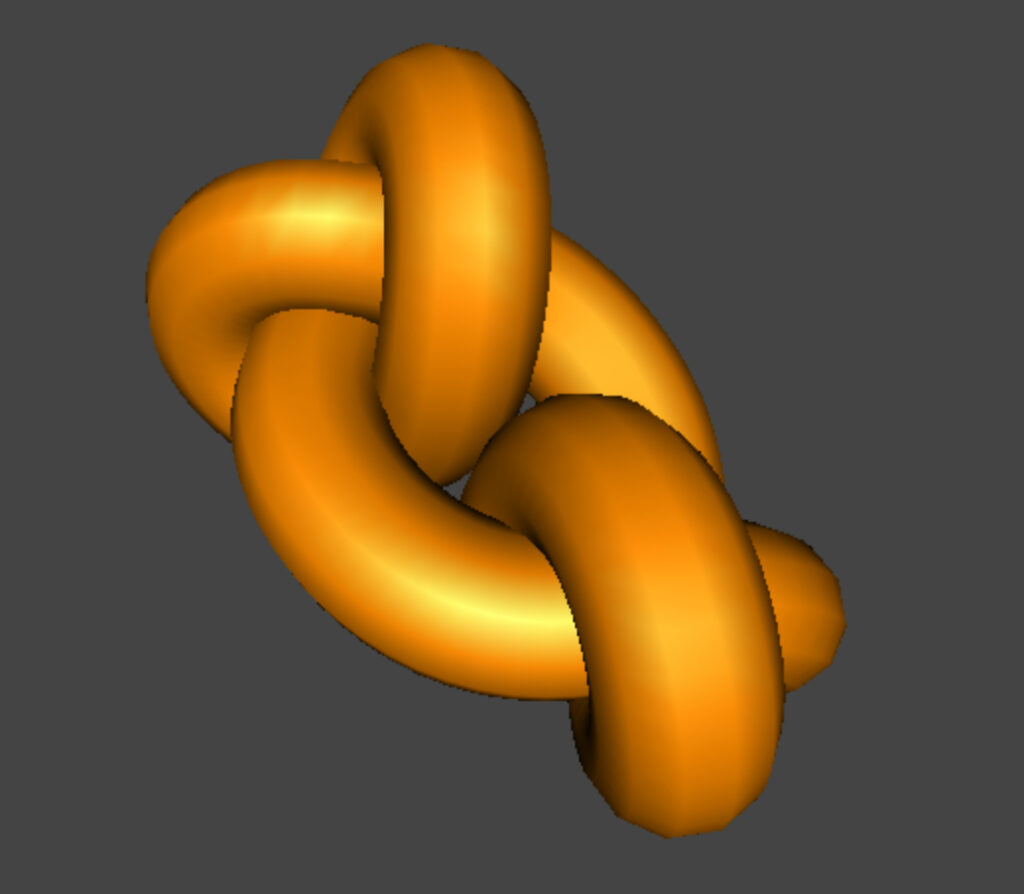

Can we always tighten the knot to its minimal position for ropelength? That is, could we tighten it down to a position where we cannot tighten any more, yet there is another position that requires less rope? So we are stuck — we cannot get to better position without first loosening the knot? This seems to be a common experience in everyday tangling — often we must first loosen a tangle to resolve it. In a mathematical sense we have found a local minimum of tying length: there is a position for the knot that requires less length, but to get there we must first increase the length. Here we have a couple examples of this phenomenon. First we have a four component link — the link around the center cannot be slipped off unless lengthened, but once it is off it can be shrunk, resulting in less tying length than the original position. The second example is similar, with a loop that cannot be taken off the product of figure eights without first lengthening it. The following two images depict a construction for the unknot that also appears to have the property that it must first be lengthened before it can be shortened. Since it is the unknot, it can be simplified to a circle, and so has ropelength Pi as we saw above. (This nice example is taken from Freedman and He, who proposed it as a test case for the knot energies discussed in Chapter 18).
This notion of getting stuck in local minima is a very common problem whenever the idea is to minimize some quantity in a complicated process. From evolution to protein folding, a challenge for the theories is to explain how the process finds its way out of local minimums.


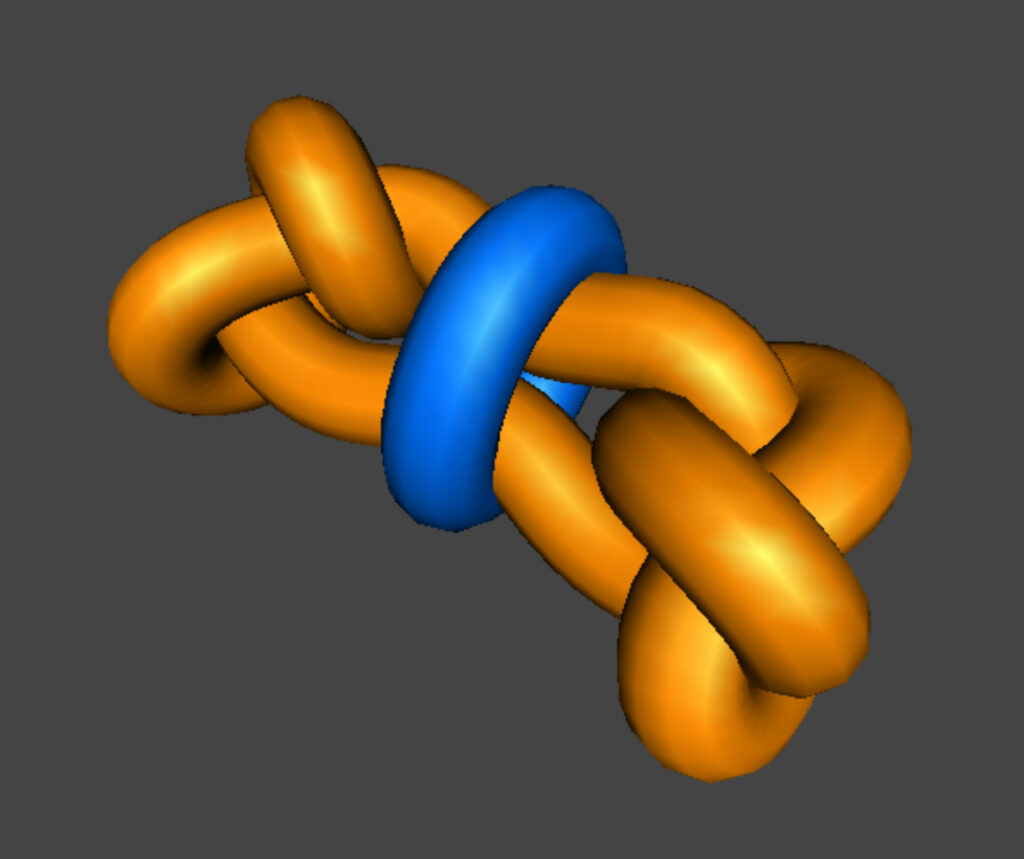
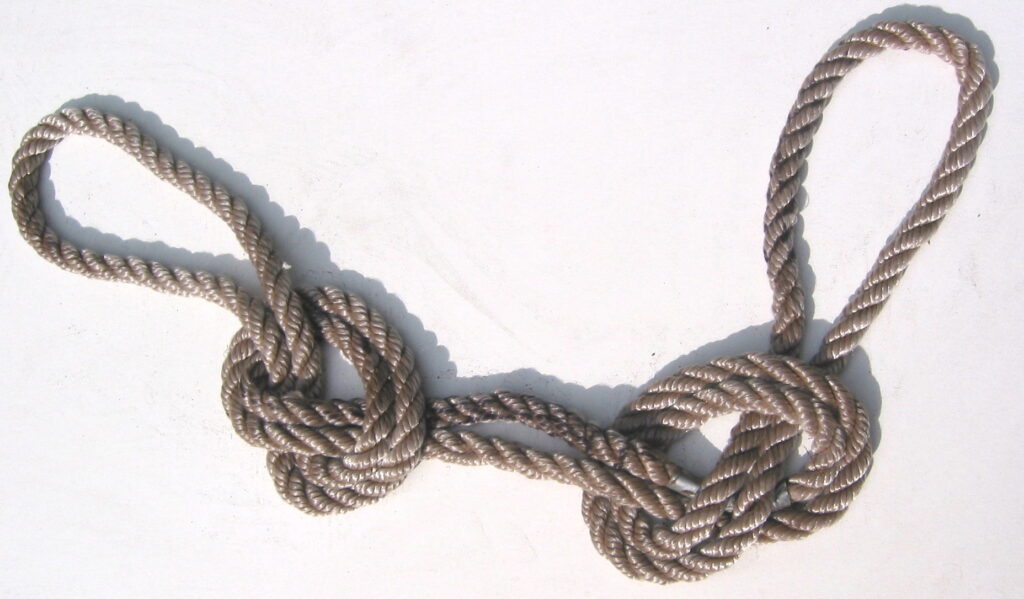
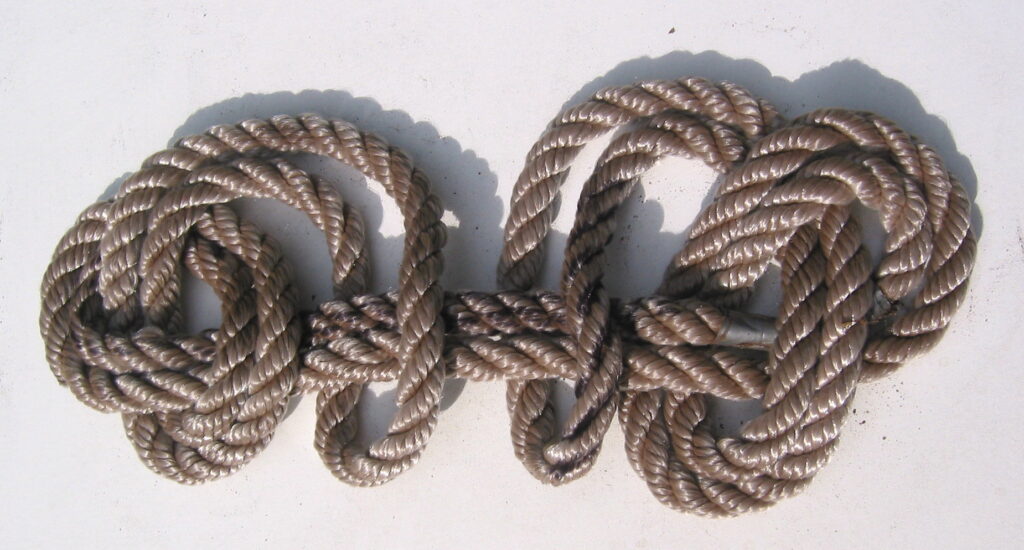
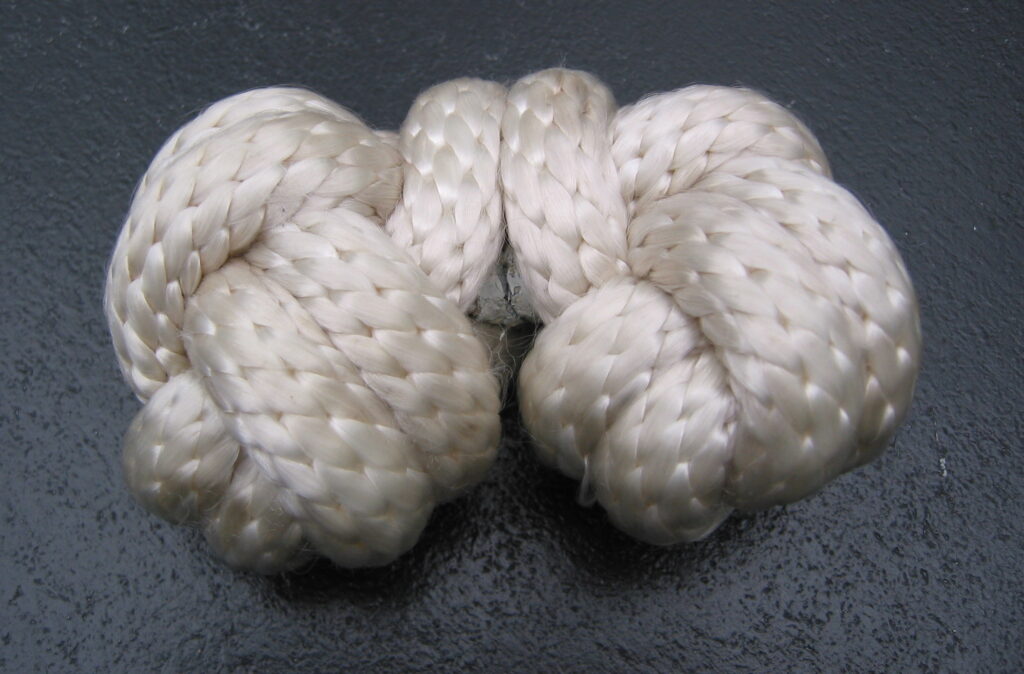
There are a couple different computer programs which can give us approximate values of ropelength for some knots. Symmetry can play an interesting role in these computations. In general, most programs will tend to preserve whatever symmetry is present in the initial position. So, for instance, if we begin with the natural rotationally symmetric position of the (2,5) torus knot (nearly planar) as pictured, and ask the computer to minimize tying length we get a configuration like that in the next picture. However, if we tie it by hand, when we pull tight we do not get a configuration with that symmetry. Further computer work confirms that the position found in hand-tying in fact has shorter tying-length. We find this position on the computer by jiggling — adding noise or random changes to the position with five-fold symmetry, and pulling tight again. On the other hand the trefoil gives roughly the same configuration from both methods.
